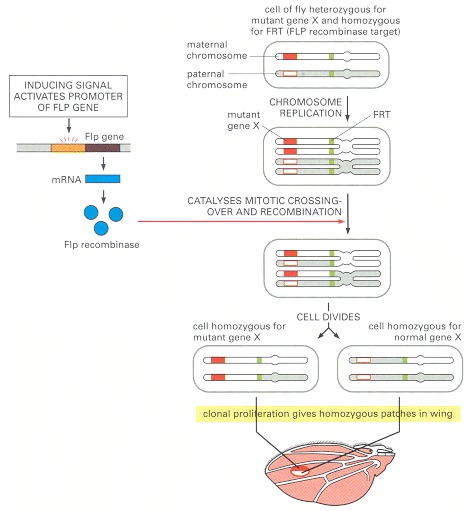From: Organogenesis and the Patterning of Appendages

NCBI Bookshelf. A service of the National Library of Medicine, National Institutes of Health.

The diagrams follow the fate of a single pair of homologous chromosomes, one from the father (shaded), the other from the mother (unshaded). These chromosomes have an FRT element (green) inserted close to their centromere, and contain a locus for a gene of interest—gene X—further out along the same chromosome arm. The paternal chromosome (in this example) carries the wild-type allele of gene X (open red box) while the maternal chromosome carries a recessive mutant allele (filled red box). Recombination by exchange of DNA between the maternal and paternal chromosomes, catalyzed by the FLP recombinase, can give rise to a pair of daughter cells, one containing two wild-type copies of gene X, the other containing two mutant copies. To help identify the cells where recombination has occurred, the maternal and paternal chromosomes can be chosen to carry, respectively, mutant and wild-type versions of an additional gene that provides a visible marker—a pigmentation gene, for example (not shown here). This marker gene is positioned on the chromosome so that recombination involving the marker locus—resulting in a visible alteration in the appearance of the cells—can be taken as a sure sign that gene X has also undergone recombination.
From: Organogenesis and the Patterning of Appendages

NCBI Bookshelf. A service of the National Library of Medicine, National Institutes of Health.